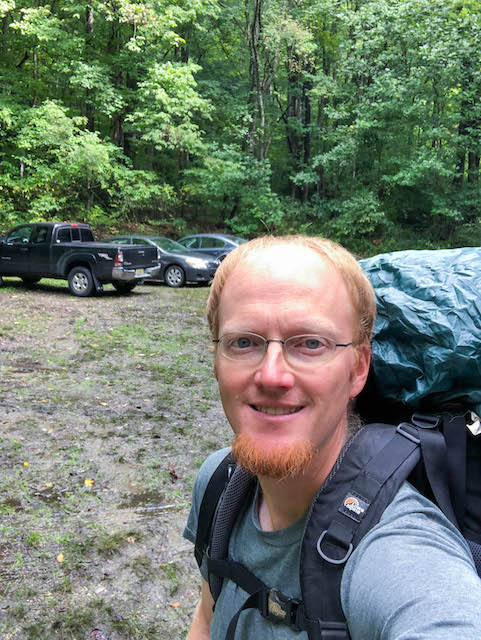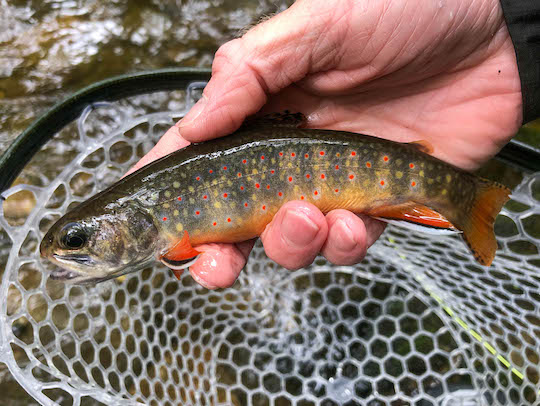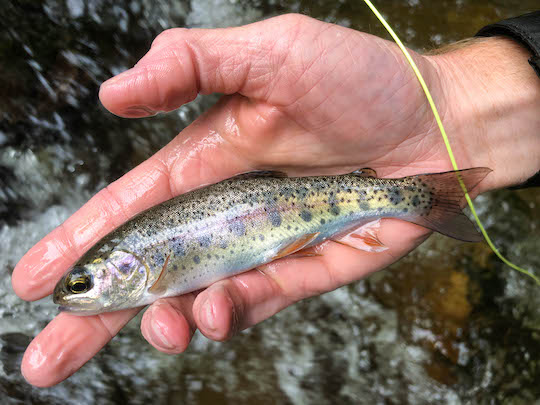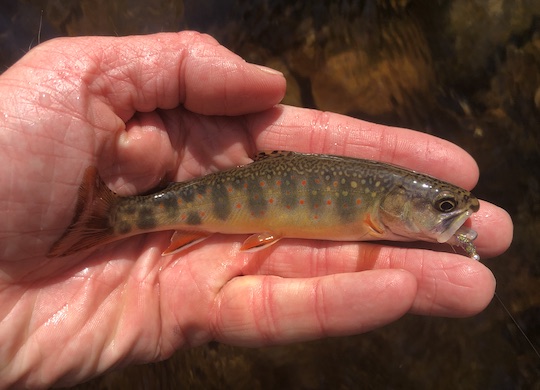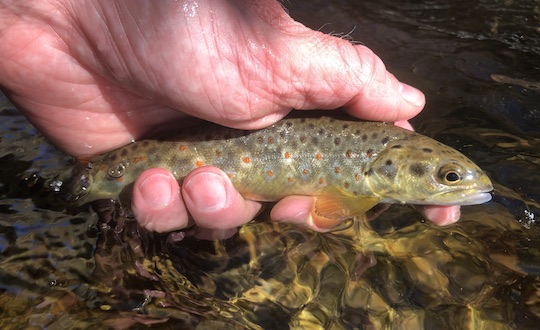Human nature causes us to look on the past with nostalgia. That can be dangerous, of course. One of my history professors in college liked to remind us that "there was no such thing as the good old days because the life expectancy back then was in the 30 year range." That's fair enough, but was there a golden age for fly rods? Ask ten different fly anglers and you'll get ten different answers on that. A newbie fly angler who just upgraded to the most expensive rod from the likes of Scott, Orvis, G Loomis, Winston, or any of the other popular rod manufacturers will tell you that this indeed is the best fly rod ever made. Manufacturers regularly bill their newest as the best ever. That's at least partially forgivable since they are in the business of selling products that require at least some level of marketing. That said, if the rods are really all that, won't they sell themselves? That's a question for a different day. What I'm really interested in is my personal all time favorite rod series.
My Favorite Rods
While some of the newest and best rods are truly incredible, my favorites, other than whatever rod is in my hand catching fish at any given time, are the original graphite Superfine rods from Orvis. They are hands down some of the most fun to fish. Thankfully they don't have the terrible "label" on the rod blank just above the handle of the newer Orvis rods (which also go a long ways towards keeping me from buying any current Orvis rod). I would probably buy several of the new ones if it wasn't for that goofy label as they are otherwise incredible rods. The blanks are unsanded (one of my favorite features), and they have the small Superfine grips that don't fatigue my hand while casting. Oh, and they flex. They are incredible soft, loading deeply into the blank for some of the most fun you can have fishing small streams. They are also in fairly high demand, meaning you can expect to pay at minimum close to original retail for one and often even more.
My first "nice" fly rod was a Superfine "Tight Loop" (an 8' 4 weight rod), and I have since found a couple more of these original Superfine graphite rods in other models. Most recently, I was on the prowl for a "One Ounce." This rod is a 6' 6" 2 weight that weighs one ounce. It sounded too good to be true. On paper, it was the perfect brook trout rod and also great for delicate dry fly presentations to any small or medium sized trout.
Finding My Next Superfine
After watching for one on again and off again for several years, I finally got a heads up from my buddy Trevor who buys and sells rods regularly. He is great at tracking down hard to find rods and he had found one at a reasonable price point. I could have had one before this point, but wasn't willing to spend way more than original retail to get it. The rod looked good in pictures and when it was delivered, I took it out and examined it. Everything was in good shape, I just needed a good excuse to fish it.
Fast forward a few months and it was time for my annual fall camping trip. This year, it was the camping trip that almost didn't happen. Then, one day, I had a conversation with my buddy John that got me excited to go and thankfully I still had some days free. We made a plan and before I knew it, the time had arrived.
Fishing My New Old Superfine Rod
Almost as an afterthought, I threw the One Ounce in my truck when I was packing for the camping trip. I figured maybe there would be some dry fly opportunities. When the day of departure arrived, we nearly skipped going. The forecast was for the first major cold front of the season to bring snow and very cold temperatures to the Smokies and broader southeastern US. Still, it looked like we might get some decent fishing on our first afternoon and perhaps the next day as well.
I got a slightly later start than intended, but eventually was on the road and headed for the mountains. Of course, a stop at Little River Outfitters in Townsend was needed. I usually think of something I need, but at minimum I like to stop and say hi to the guys at the shop. On this trip, I was after a new line for a reel I had sitting around that would work on my new Superfine. After that stop, we headed over the top of Newfound Gap and down the other side to Smokemont Campground. I've been doing a fall camping trip there for years and always enjoy the crisp cool mornings and good late autumn fishing. Dry fly opportunities are often excellent around this time of year, with low flows common. Anglers should be very cautious of brook and brown trout spawning and avoid walking through redds and spawning areas.
When we arrived at the campground, the sun was shining and while the wind was starting to pick up with the front coming in, we knew that this would be the warmest water of our whole trip. In other words, we needed to get out there and fish hard. Since I wanted to make sure and fish the new-to-me old rod, I put it carefully together and pulled out a small Parachute Adams. Surely there would be at least one or two fish rising.
We walked over to the stream and started working up a nice low gradient section. Not too long into our session, I spied a smallish trout holding in a nice slick that was rising fairly steadily. Exactly the kind of fish I was looking for. It took a couple of casts to get the fly in the right spot due to the strong wind, but the fish ate as soon as I got a good drift. I whiffed. Seriously. Not once, but twice.
 |
| "A perfect dry fly slick." ©2025 David Knapp Photography |
Still, the fish was rising. I figured out it was more likely to eat if I cast farther above it instead of close, so I started casting 4 or 5 feet above the fish to set up a good drift. On my second or third cast up there, a fish I never saw came up and inhaled the fly. Thankfully, even though I was focused on my initial target, I was paying enough attention to set the hook and a lively fight ensued. Turns out I caught the larger of the two fish in that run which suited me just fine. My first trout on the "One Ounce" was a very respectable brown trout and on a dry fly no less.
 |
| "Dry fly first fish on my new old rod." ©2025 David Knapp Photography |
The rest of the day was anticlimactic. I did catch another fish or two, still all on dry flies. One rainbow in particular was fun. I missed it on my first drift through a strong back eddy below a boulder. The fish was facing directly towards me when it ate, and I simply pulled the fly completely out of its mouth.
 |
| "Back eddy." ©2025 David Knapp Photography |
Thankfully, it didn't feel the hook, and on the next drift it ate again. I waited a little longer to set the hook to let the fish turn, and immediately felt the 2 weight rod bend deeply as the lively rainbow ran hard into the current. After a fun fight, an average Smoky Mountain rainbow trout came to hand.
 |
| "Dry fly eating rainbow trout." ©2025 David Knapp Photography |
The next day saw some incredible dry fly fishing on Deep Creek, but the weather was much colder. In fact, things were getting nasty enough and cold enough that we decided the smart idea probably involved heading home earlier than intended. Low temperatures our second night were forecast to be in the low to mid teens. Sleeping would have been fine, but getting up the next morning and crawling out of a warm sleeping bag would have been miserable.
 |
| "Driving through the snow." ©2025 David Knapp Photography |
I made it home in time to enjoy our first snowfall of the season on the Cumberland Plateau and appreciated my nice warm bed more than usual. The first expedition with my new old rod was a success. Now I just need to find a good time to go brook trout fishing with it...
 |
| "One last look." ©2025 David Knapp Photography |
Find more information on a Smokies fly fishing guide HERE.





























